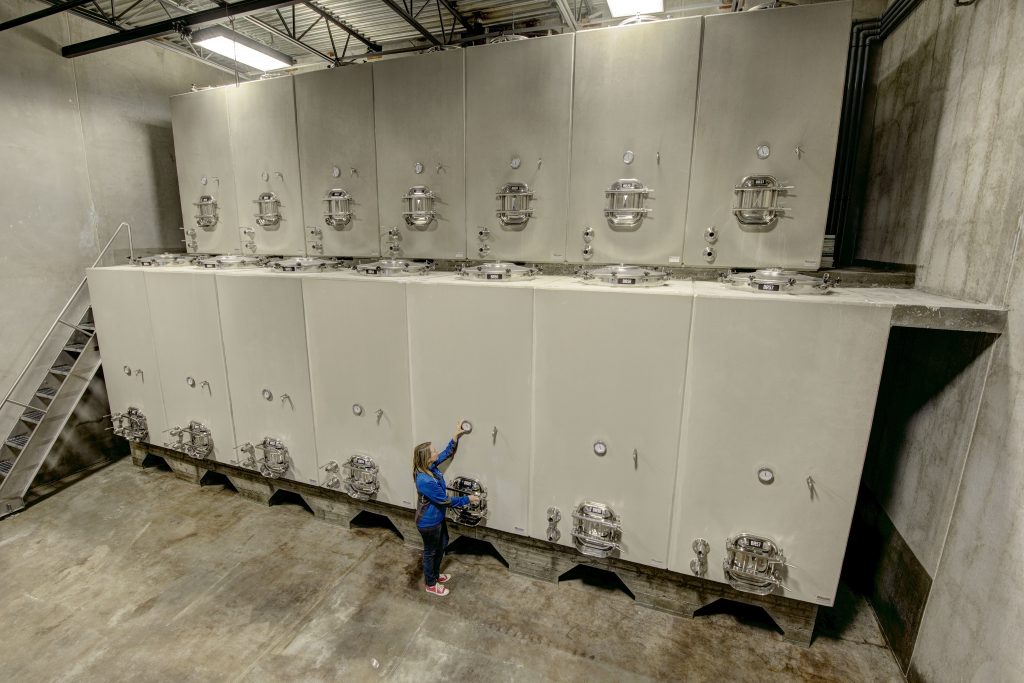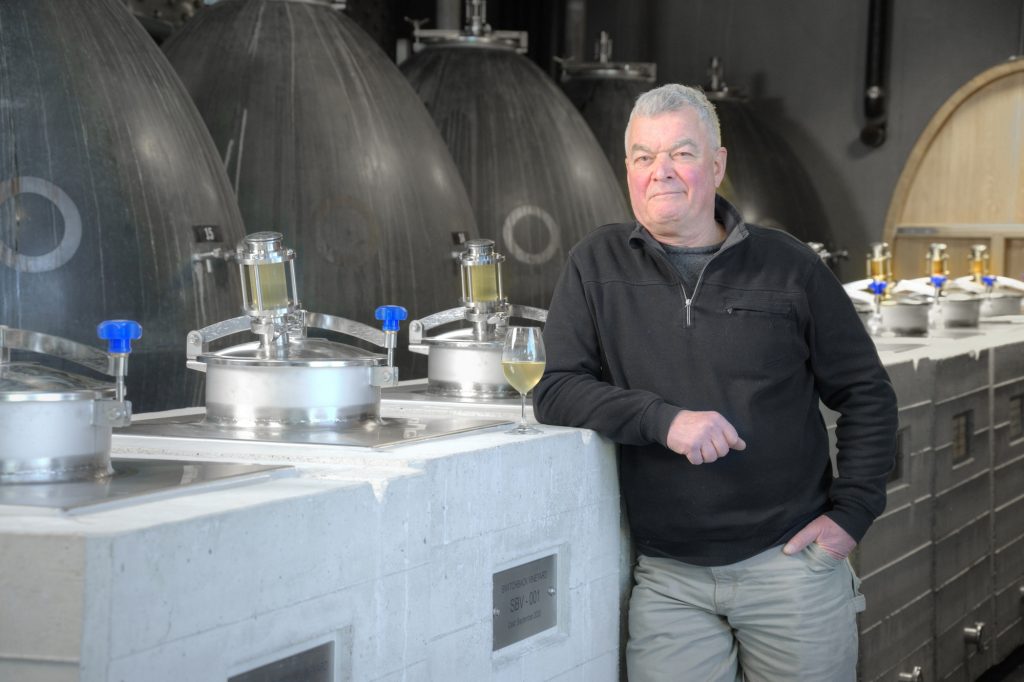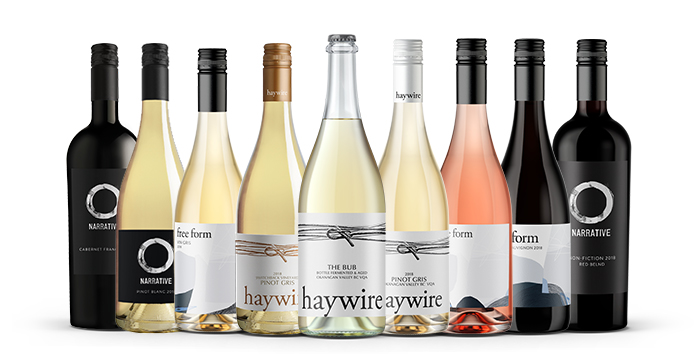Okanagan Crush Pad (OCP) has quickly built a reputation as a premium wine producer, receiving many awards and accolades from the world’s top wine critics since its launch in 2011. Our chief winemaker, Matt Dumayne, brings unparalleled insight and passion to the OCP cellar with a particular interest in low intervention and organic wine production. With Matt at the helm, OCP’s wines (even ones that are typically aged in oak barrels) are aged and fermented in state-of-the-art concrete and amphorae tanks. This method contributes to the authentic taste of our wine as these tanks are neutral and therefore do not impact the taste of the grapes.
While concrete tanks have been popular since the 19th century for both fermentation and maturation, the popularity of concrete waned as stainless steel became more popular in the 1970s. Nevertheless, concrete eggs have been gaining in popularity once again with more innovative producers around the world over the last 20 years. The overall influence of concrete on wine quality is also very much appreciated by such premium producers as Bordeaux’s Petrus, Michel Chapoutier, and Alberto Antonini.

OCP is the first Canadian winery to invest in concrete fermentation tanks in a significant way. Currently, the winery has 40 large vessels that can hold 120,000 litres (13,000 cases). Six black concrete eggs were made by Sonoma Cast Stone, 25 tanks of various shapes and sizes are made by Nico Velo in Italy, and 9 tanks were made right here at home in Summerland by co-owner Steve Lornie. Furthermore, sand and gravel from each of our three vineyards – Secrest Mountain in Oliver, and Switchback and Garnet Valley Ranch, both in Summerland – were collected for us in construction of three 300 litre tanks from each site to add nine new tanks to OCP’s inventory. Each tank was filled with a lot of wine with the goal of evaluating the flavour profile impact of the specific sand and gravel on the wine. Based on findings, larger versions of the tanks will be constructed using the material from one site.

More and more winemakers are adopting concrete as they have discovered that it provides the benefits of oak, but without any of their negative aspects (ever had an overly oaked Chardonnay?). One of the much-appreciated benefits of concrete eggs is due to the fact that its shape offers a high level of contact between the wine and the lees which contributes to the beautiful viscous texture that is so commonly a trademark of OCP wines.
Concrete is also a natural insulator, able to adapt to both heat and cold. This allows for a gradual fermentation without any temperature spikes, especially important for wines made without commercial yeasts, such as those crafted by Matt Dumayne.
While stainless steel allows no oxygen into the tank, concrete is somewhat porous which allows a gradual micro-oxygenation, thus allowing the wine to breathe and evolve. This is one of the reasons that wine fermented and aged in concrete have not only a noticeable preservation of fruit flavour but also an appealing round mouthfeel, somewhat similar to oak, only without the often-overbearing notes of sweet vanilla and coconut found in wines that are fermented and aged in new oak.
It is important to remember that oak is much like cooking with salt. A little high-quality oak can enhance some qualities, but too much and it’s all you can taste! If you are on the hunt for wines that truly reflect the terroir in which they are grown, it’s time to experiment with wines raised in concrete and enjoy all of the many benefits that these low-intervention wines can offer.
For some excellent examples of how wines raised in concrete will differ from those fermented and aged in oak, be sure to look out for such wines as Free Form Vin Gris, Haywire Switchback Vineyard Pinot Gris, and Narrative Non-Fiction.

